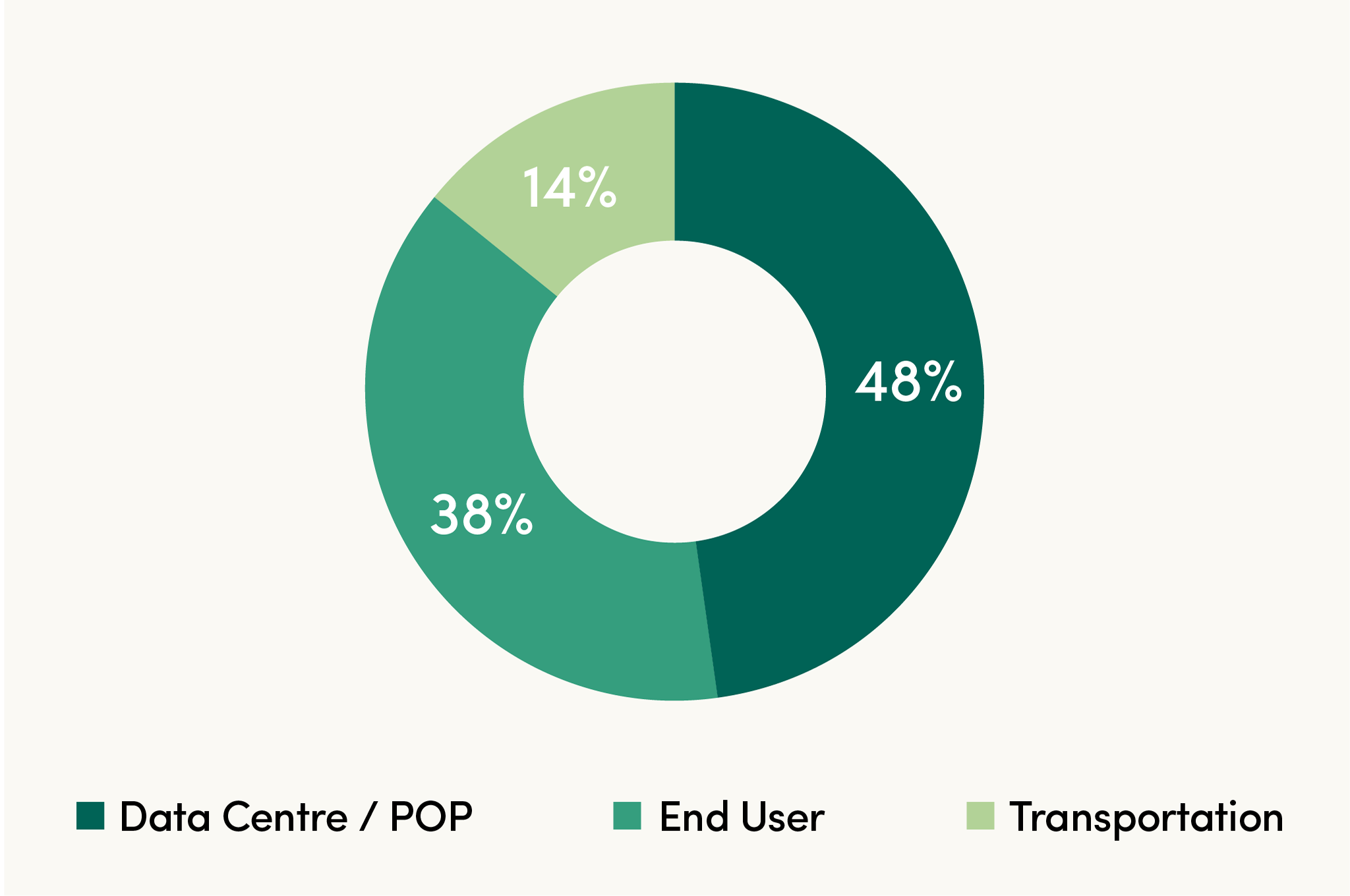
Most people are aware that there’s an environmental element to the everyday products that they use. We may not know the full extent, but we mostly understand that products from clothing to electronics are the result of energy-consuming processes such as manufacturing and shipping. We also understand these processes come with environmental consequences.
Something that we’re perhaps less aware of, is the impact of digital products that we use daily. Our digital activities such as browsing websites, streaming videos, or sharing GIFs, all have a hidden underlying environmental cost. Even the simple act of sending an email is estimated to produce as much as 4 grams of CO2!
Sustainable web design
It’s statistics such as these that have spurred on sustainable web designer Tom Greenwood, who has written a book on the subject, and whose work also encompasses the Carbon Calculator, an online tool that tests the environmental friendliness of websites. With the average web page tested producing 1.76 grams of CO2, it may come as a surprise that the environmental impact is so high for our digital products.
The energy-consuming processes behind websites include everything from the data centres used for hosting, to the devices they are used on.
Fortunately, there’s ample opportunity to improve sustainability at many different stages including Green Hosting and Website Optimisation.
Internet energy breakdown

Energy usage breakdown for websites: 48% Data Centre / POP, 38% end user, 14% Transportation
Green hosting
Before we look at green hosting, let’s get more of a background about hosting in general. Most websites that we interact with are hosted on computers called servers, also known as the cloud. These servers are stored in locations known as data centres, the running of which uses extremely high energy-consuming processes that come from constantly being on, as well as the air conditioning used for cooling the hardware (essential for maintaining optimum performance).
This is why switching to hosting where the data centre is powered by renewable energy, is one of the easiest and most effective ways to improve the sustainability of a website. Hosting which takes advantage of renewable energy is known as Green Hosting.
How does it work?
But how does Green Hosting work? Based on the term, it’s easy to assume that the data centre itself is directly powered by renewable energy sources (wind, tidal, solar) located nearby or readily integrated. It’s worth highlighting that this is not the typical case with major technology companies (for example, Amazon and Google).
Instead, a popular choice for green hosting providers such as GCP (Google Cloud Platform), is to obtain energy via PPA (Power Purchase Agreements). PPA is where contracts are made with companies for purchasing large amounts of renewable energy that is used on the same grid where the data centres are located. It may sound slightly indirect, but it’s an effective method for sourcing renewable energy to be used in hosting (and much more sustainable than the fossil fuel equivalent). Google is a pioneer of PPA and has pledged to run all of its services on CFE (Carbon-Free Energy) 24/7 by the year 2030.

Screenshot from Ecograder test for sites hosted on Platform.sh
At Dusted we use Platform.sh to deploy, power and manage our applications, the underlying hosting provider of which is Google. Using Platform means that both our newer and migrated projects benefit and tick the box for Green Hosting.
Optimisation and sustainability
Once the website is running on CFE, does that mean using the website is 100% environmentally friendly? Sadly this is not the case. Green Hosting is just one part of the picture, with another important part being the energy usage of devices.
Modern websites are made available on a huge variety of devices and the computing levels for generating web pages vary substantially, depending on both the device and developer processes that have been used.
Over the last few years, optimisation tools such as Google Lighthouse, have become more widespread. These tools measure the performance of the website using categories such as page speed, search friendliness, and accessibility.
More recently the criteria by which a site is judged have become more strict, so we’re generally discovering that websites that were built 4 or 5 years ago tend to perform worse in these performance categories (and are therefore less sustainable) because the guidelines were a lot looser. Broadly speaking, this has a lot to do with the rapid enhancement of new development techniques, the increase in standards, and the amount of content accumulated over time. This is one of the reasons why it’s important to consider the long-term maintenance of your website, removing unnecessary content, and keeping software up to date.
Is sustainability the future of web development?
Sustainability should not be a niche or a novelty. We need to be creating a world in which sustainability is the default, not the exception.
Tom Greenwood, Sustainable Web Design
Undeniably, there are levels of optimisation to sustainability, with the current trend to assign grades or percentages. As a broad topic, there may not always be an opportunity to pursue it to its fullest for every project. However, there’s a lot we can do by default and within a project’s scope.
We are working hard to make Dusted more sustainable, working with clients such as Carbon Trust who have been pioneering decarbonisation for more than 20 years for businesses, governments and organisations around the world. Whilst it’s important to be passionate about the underlying issues, and not see sustainability simply as a bonus, environmental practices can be both beneficial for the project and the planet.
- Find out more about our digital services
- Dig deeper into our portfolio of websites
- Explore the digital posts in our blog
- Gain further web insight here
If you want to talk to us about your website, get in touch to arrange a call – without obligation but with the promise of sustainable understanding and technical insight.



